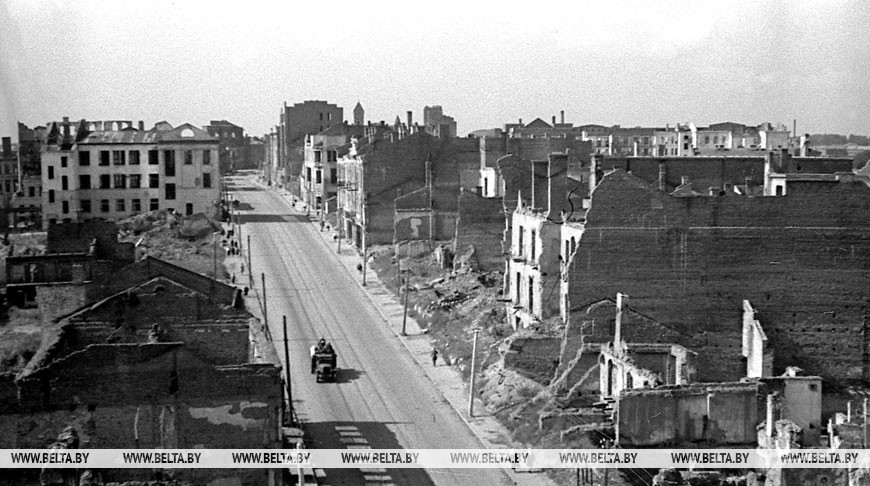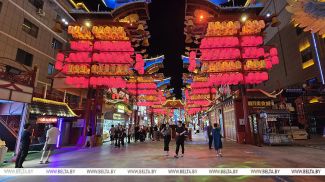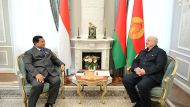
MINSK, 9 January (BelTA) - Piles of bricks, rubble, ashes and smoking ruins - that was what Minsk looked like on 3 July 1944, the day the city was liberated. Rubbles of buildings stretched for three kilometers on both sides of Sovietskaya Street (now Independence Avenue). Lenina Street, Karla Marksa Street, Internatsionalnaya Street, Kirova Street, the railway station looked very much the same. The total damage to the city caused by the war was estimated at 6 billion Soviet rubles. Vyacheslav Selemenev, leading researcher of the Publications Department at the National Archives of Belarus, candidate of historical sciences, analyzed the difficult period of Belarus’ restoration after the Nazi occupation in the Economy of Belarus Magazine.
“Less than a quarter of the government and public buildings and only a fifth of the housing stock survived in liberated Minsk. The tram depot, workshops and 42-kilometer trolley network were completely destroyed. 75 tram cars and workshop equipment were burned and partially taken to Germany,” Vyacheslav Selemenev said. “Major industrial companies and practically all the enterprises of the producers’ and disabled cooperative societies were destroyed. Only 19 out of 332 pre-war ones survived. Much of the city services (tramways, electric networks, water supply and sewerage systems) were in ruins. As the People's Architect of the USSR Vladimir Korol recalled, the question was whether the city that lay in ruins could be rebuilt with little equipment available back then. There were even the discussions of a new location for the capital of the BSSR at a distance of 10 kilometers.”
However, after careful economic calculations, ‘taking into account the traditions and history of Minsk's centuries-long location in one place’ it was decided to restore the city.












